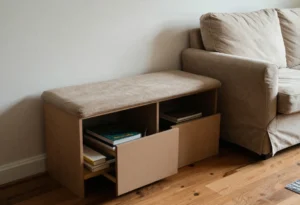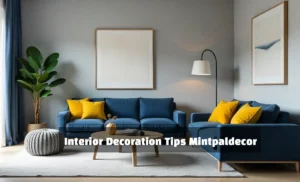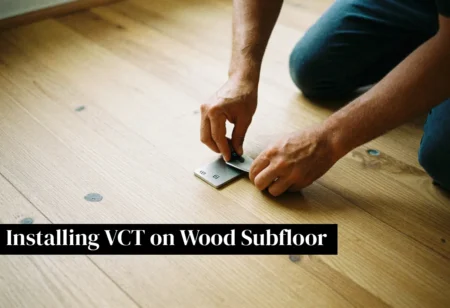Flowers have a remarkable ability to instantly brighten a space and lift one’s mood. From lush bouquets to stunning centerpieces, floral arrangements are a simple yet powerful way to add beauty and joy to both everyday moments and special occasions. Though floral design may seem daunting to the uninitiated, it is an immensely learnable and rewarding skill. With a grasp of key principles, types, tools, and techniques, anyone can become a floral design master.
This article will provide a comprehensive overview of floral design, equipping you with the knowledge to take your arrangements to the next level. We’ll explore the foundations of floral artistry, walk through essential supplies and methods, and reveal tips for elevating your floral work. Read on to unlock the secrets of sophisticated, jaw-dropping floral designs that you can craft with your own two hands.
An Introduction to the Floral Design Craft
Before diving into specifics, let’s begin with a broad overview of floral design as an artistic medium and practice.
Floral design refers to the art of organizing flowers, foliage, and other elements into aesthetically pleasing arrangements. It employs the thoughtful use of design fundamentals to create visual harmony and interest. From compact, handheld bouquets to sprawling installations, the possibilities are endless.
This art form serves many purposes. Floral designs are often the centerpieces of celebrations, commemorations, religious services, and other significant events. They’re also used to decorate homes and public spaces, adding natural beauty to manmade environments. Moreover, floral design is often practiced purely for personal enjoyment and artistic expression.
Mastering floral design requires an understanding of core principles along with technical know-how. But the payoff is well worth the effort. Let’s explore why:
The Joy and Impact of Floral Design
There are so many benefits to learning floral design, on both a personal and broader level. Here are some of the top reasons to add floristry to your creative skillset:
- Express yourself artistically. Floral design is an immensely satisfying art form, allowing you to translate emotions and ideas into tangible beauty. The creative possibilities are endless.
- Adorn your life with flowers. Fresh floral arrangements instantly elevate any space. Plus, surrounding yourself with flowers has proven mental health benefits, reducing stress and boosting mood.
- Connect more deeply with nature. Working closely with flowers and foliage fosters an appreciation for the natural world. Floral design gets you hands-on with the beauty of botanicals.
- Perfect a specialized skill. Mastering floral design requires practice and expertise. The sense of achievement upon gaining floral design chops is immense.
- Save money on flowers. Making your own arrangements is often more affordable than purchasing pre-designed ones. You can also grow some of your own floral supplies.
- Celebrate occasions beautifully. From birthdays to weddings, a hand-crafted floral design makes any event feel extra special. Your arrangements will wow guests.
- Start a business. Many floral designers translate their passion into successful small businesses. Selling arrangements can supplement your income.
- Spark joy for others. Few gifts have the power to delight like beautiful blooms. Your floral gifts and designs will bring smiles to loved ones.
What’s Ahead in Our Floral Design Masterclass
Now that you’re inspired to elevate your arrangements, let’s get to the heart of floral design: the key principles, tools, techniques, and best practices that separate novice arrangements from jaw-dropping works of botanical art.
Consider this your complete masterclass in floral design. We’ll cover:
- Core principles of floral design
- Major types of floral arrangements
- Must-have design tools and supplies
- Step-by-step techniques for floristry
- Design tips from the pros
By the end, you’ll be fully equipped to craft stunning floral arrangements that amaze everyone who sees them. So grab some flowers and let’s begin cultivating your inner floral artist!
Mastering the Principles of Floral Design
All exceptional floral design begins with a mastery of core principles. These fundamentals guide the visual impact and emotional appeal of arrangements.
Understanding and properly utilizing the following principles lays the groundwork for floral design excellence.
Balance
The sense that all elements of a composition are harmoniously arranged. Symmetry and asymmetry both create balance in different ways.
- Symmetrical – Elements are mirrored evenly on both sides.
- Asymmetrical – Elements have uneven visual weight but are composed to feel cohesive.
Scale
The size and proportion of materials used. Scale establishes visual flow and directs the viewer’s eye.
- Smaller focal flowers balanced by larger foliage creates interest.
- Disproportionately large or small elements disrupt scale.
Rhythm
The sense of visual movement throughout the arrangement. Rhythm makes designs intriguing and dynamic.
- Repeating patterns, gradients, and grouped elements creates rhythm.
- Irregular, chaotic placements break rhythm.
Harmony
The cohesion of all elements. Harmony produces a unified overall effect.
- Colors, textures, and materials complement and blend together.
- Clashing styles and themes work against harmony.
Emphasis
Creating a focal point that attracts attention. Emphasis adds impact.
- Bright contrasting colors, unique shapes, and placement draw the eye.
- Overdoing emphasis or having none at all diffuses focus.
Color Theory
Strategic use of color combinations and meanings. Color establishes mood.
- Complementary, analogous, and monochromatic palettes.
- Colors have cultural associations to leverage.
Texture
The visual and tactile qualities of materials. Texture adds depth and interest.
- Coarse, smooth, fuzzy, glossy – embrace diverse textures.
- Too much variation or homogeneity in textures underwhelms.
Mastering these concepts takes floral design from haphazard to intentional and polished. Always keep principles in mind when conceptualizing and executing arrangements.
Styles and Shapes: Types of Floral Design
Beyond foundational principles, floral artists must choose a style and structure for the arrangement. The options are abundant, but generally fall into categories based on the shape and placement of materials.
Here are some of the most popular types of floral design to get acquainted with:
Mass Arrangements
Tightly packed clusters of flowers in organic, dome-like shapes.
- Look full and lush yet relaxed.
- Groupings tied together or massed in containers.
- Great for table centers and decor.
Line Arrangements
Linear, vertical designs. Create movement, rhythm, and height.
- Focal flowers suspended along vertical elements.
- Curve lines for added dimension.
- Draw the eye upwards.
Triangle Arrangements
Floral designs formed in pyramid or cone shapes.
- Provides a sense of stability.
- Variations include right-side-up or inverted.
- Useful for bold standalone statements.
Circle Arrangements
Flowers radiating outwards in circular patterns.
- Connote unity, wholeness, and focal emphasis.
- Circular designs work well around spheres.
- Can feel static – break up with asymmetry.
Line-Mass Arrangements
Combining line and mass styles.
- Offsets the freeform mass with structured lines.
- Provides grounded yet organic designs.
- Great for tying multiple arrangements together.
This covers some of the most versatile shapes, but feel free to experiment. Once you know the fundamentals, you can invent completely new styles!
Equipping Your Floral Design Toolkit
One can’t become a floral design master without first gathering the proper supplies. Certain tools and materials are absolutely essential for crafting gorgeous, long-lasting arrangements.
Below we’ll overview must-have items for your floral design toolkit:
Mechanics
The structures that provide support and shaping.
- Floral foam – Green foam that holds stems in place. Soak before using.
- Floral tape – Used to bind stems and attach picks/wires.
- Wire – Creates structure and support for floral pieces.
- Pin frogs – Floral foam secured in pin-holding devices.
Attachment Mechanisms
Adhesives and devices that assemble floral elements.
- Florist wire – Thin wire that easily bends to wrap stems.
- Glue dots – Temporary bonding dots for attaching elements.
- Floral putty – Clay-like material that adheres pieces.
- Wire cutters – Cuts wire cleanly for shaping arrangements.
Binding Mechanisms
Tools used to hold bundled floral pieces together.
- Rubber bands – Hold flower bundles and resist moisture.
- Raffia – Biodegradable tying material made from palm leaves.
- Twine – Twisted tying material made from natural fibers.
- String – Any lightweight string material.
Fresh Floral Materials
The flowers, greenery, and foliage that make up arrangements.
- Focal flowers – Large, eye-catching blooms like roses, lilies, tulips.
- Filler flowers – Smaller flowers like baby’s breath, lavender, daisies.
- Greenery – Leaves and foliage like ferns, ivy, eucalyptus.
- Accent plants – Unusual botanicals like succulents, air plants.
- Foraged elements – Interesting leaves, branches, seed pods.
Bases, Backdrops and Accessories
Items that support and embellish arrangements.
- Vases – Containers for floral arrangements. Glass, ceramic, metal.
- Floral foam – Tucked into containers to hold flowers.
- Pedestals – Stands to elevate floral pieces.
- Backdrops – Walls, screens, trellises that arrangements are set against.
- Accessories – Decorations like candles, figurines, ornaments.
Dried and Preserved Flowers
Dried flowers and preserved botanical materials.
- Air-dried flowers – Suspended flowers dried naturally.
- Silica dried flowers – Dried rapidly in silica gel.
- Pressed flowers – Flattened and dried between pages.
- Preserved flowers – Treated with glycerin or resin to retain color and shape.
- Everlastings – Naturally long-lasting flowers like strawflowers.
Living Plants and Compositions
Incorporating living plants into designs.
- Potted arrangements – Designs within planters.
- Terrariums – Miniature contained gardens.
- Living walls/vertical gardens – Plants arranged on vertical fixtures.
- Topiaries – Decoratively shaped potted plants.
With these raw materials and tools, you’re fully equipped to start designing! Build up your floral toolkit over time to expand possibilities.
Mastering the Methods: Floral Design Techniques
Now for the fun part: transforming raw materials into jaw-dropping floral art using specialized techniques. Below we’ll break down step-by-step methods for crafting various types of floral designs.
Follow along to pick up the technical know-how of a professional florist.
Wiring and Taping Methods
Proper wiring and taping secures flowers and greenery within arrangements. Here’s how:
Wire flowers:
- Cut 24-gauge wire into 3-4 inch segments.
- Hold stem gently but firmly. Position wire halfway up the stem.
- Wrap wire tightly around stem just below flower head.
- Twist wire ends together beneath flower. Leave 1-2 inches exposed.
Bind with floral tape:
- Cut 2-3 feet of 1/2 inch floral tape.
- Wrap tape just below flower head, stretching as you go.
- Cover stem 2 inches down, overlapping edges. Cover wire tips.
- Stretch tape gently to activate adhesive. This binds arrangement.
Assembling Arrangements
Composing balanced and visually appealing arrangements is the heart of floral design. Here’s how to create a beautiful bouquet:
- Gather a color palette of flowers, greenery, and accent plants. Include varying shapes and textures.
- Cut stems on an angle with sharp floral scissors or shears. Use a sharp knife for woody stems.
- Trim leaves that would sit below the waterline in a vase.
- Wire and tape delicate flowers and stems if needed for support.
- Begin with larger focal flowers and greenery as the base and structure. Establish scale and shape.
- Add smaller stems and fillers throughout for detail, asymmetry, and rhythm.
- Incorporate accent plants like succulents or vines for texture.
- Wrap stems together with a binding mechanism like twine or ribbon.
- Trim stems evenly at bottom for a polished, professional look.
- Place in water source or floral foam immediately to maximize freshness.
Follow this process while keeping principles like balance, harmony, and texture in mind. Alter steps as needed to create different styles.
Designing Floral Centerpieces
Centerpieces serve as focal points for special events. Here are tips for eyecatching arrangements:
- Choose low, flat vessels for table centerpieces so guests can see and converse over them.
- Incorporate height for visual interest using floral picks, tall focal blooms, and risers.
- Use floral foam or pin frogs to hold stems rather than just water. This provides stability and longevity.
- For grand arrangements, bunch stems through a holder unseen at the back of the piece. Drape flowers artfully over the front.
- Set candles around or within the design. This adds ambience and drama through flickering light.
- Use decorations like beads, ribbons, and baubles to complement the flowers and theme. Avoid clutter.
- Display personalized messages or table numbers within or atop arrangements.
Your centerpieces should reflect the occasion’s tone and bring joy to guests. These tips transform ordinary arrangements into conversation-starting masterpieces.
Elevating Events with Floral Mastery
One of the top applications of floral design skills is for occasions and events. Your arrangements can make weddings, dinners, ceremonies, and more truly extraordinary.
Let’s explore some popular events and services where your floral talents will wow:
Designing for Weddings
From bouquets to receptions, weddings utilize loads of flowers. Offer your skills with:
- Bridal bouquets – Cascading, hand-tied designs for the bride and bridesmaids.
- Boutonnieres and corsages – Pin-on flowers for gentlemen and ladies.
- Ceremony decor – Aisle designs, archways, altar arrangements.
- Receptions – Showstopping table centerpieces, cake flowers, room decor.
- Send-off flowers – Farewell petal tosses, decorated getaway vehicles.
With so many opportunities to contribute beauty, your talents will be invaluable for brides’ big days.
Corporate Event Design Services
Businesses also utilize floral designers’ services for branded events. Provide:
- Table centerpieces – Elevate corporate dinners and luncheons.
- Stage decor – Accent speaking platforms and display areas.
- Entryway arrangements – Greet guests with stylish designs.
- Ice sculptures – Enhance corporate cocktail parties.
- Coordinating decor – Match flowers to brand colors and styles.
Your arrangements lend sophistication, aesthetic cohesion, and luxury. Businesses will keep coming back.
Sympathy Workshops and Floral Tributes
Floral tributes honor departed loved ones and bring comfort to grieving families. Provide:
- Funeral arrangements – Appropriate flowers like lilies and roses for services.
- Sympathy bouquets – All-white or soft pastel arrangements.
- Wreaths and sprays – Designs for caskets and memorials.
- Workshops – Guide DIY funeral arrangement-making for closure.
Your compassion and artistry helps beautify solemn services, easing grief.
Floral Content Creation and Marketing
Share your talent and attract clients through social content like:
- Photo posts – Vivid shots of your impressive floral work.
- Tutorial videos – Reels of flower care and arranging tips.
- Behind-the-scenes – Show your design process from start to finish.
- Client gifts – Send small “just because” arrangements to delight.
- Email newsletters – Send arrangement inspiration and seasonal trends.
By consistently posting polished content, your personal brand and style shine through. This organically draws ideal new clients to your floral services.
The occasions and opportunities to employ your floral mastery are endless. With skill and passion, your arrangements can make every event breathtaking.
Pro Tips for Taking Your Designs to the Next Level
You now have a comprehensive understanding of floral design principles, materials, methods, and applications. Here are some final tips and tricks from professionals for truly next-level arrangements:
- Use floral foam and pin frogs – These hold stems securely and provide longevity compared to just water.
- Remember: odd numbers – Arrangements with odd numbers of flowers look more organic and full than even groupings.
- Mix varieties and seasons – Don’t limit to what’s freshly in bloom – incorporate preserved flowers and dried elements too.
- Change water and recut stems daily – Fresh water and diagonal trims prolong vase life significantly.
- Consider height variations – Add flower picks, risers, and tall focal flowers for multi-dimensional looks.
- Rotate and display arrangements – Shift vantage points to showcase the full 360-degree design.
- Rotate and display arrangements – Shift vantage points to showcase the full 360-degree design.
- Play with lighting – Spotlights, strings of lights, and candles illuminate textures and colors.
- Embrace imperfection – Slight asymmetries and organic touches give arrangements life.
- Photograph your work – This lets you review, improve, and share on social media.
- Start a garden – Grow your own flowers, foliage, and accent plants to save money.
- Practice consistently – Making 3-4 arrangements per week develops and hones skills quickly.
- Take inspiration from masters – Study style techniques from floral artists you admire.
- Enjoy the process – Relax and have fun! Floral design should be creative and meditative.
Implement these tips to amplify the visual appeal, longevity, and wow-factor of every arrangement. Before you know it, you’ll be a floral design expert!
Cultivate Your Creativity with Floral Mastery
We’ve only just begun to tap the incredible potential of floral design. From lush wedding centerpieces to poignant sympathy sprays, the applications of your newfound skills are unlimited.
Hopefully this guide has sparked inspiration and equipped you with the principles, tools, and techniques to elevate your arrangements to new heights of beauty.
The final step is to begin practicing regularly. Set aside time each week to craft different styles of floral pieces, continually expanding and refining your skills. Before long, you’ll be the new go-to floral artist for friends, family, and beyond.
As your floral mastery grows, so does your capacity to adorn the world with natural wonder. Our homes, events, and communities are made brighter and more joyful through the floral artist’s gift. Now go beautify the spaces and lives around you with your own sensational floral designs!
Conclusion: Unlock the Potential of Floral Mastery
Floral design is a tremendously learnable and rewarding art form that anyone can master with proper knowledge and consistent practice. In this guide, we’ve only skimmed the surface of the principles, styles, tools, techniques, and applications of floral mastery.
To recap, exceptional floral design stems from:
- Understanding core design principles like balance, harmony, and emphasis
- Utilizing the right materials and tools for the arrangement style
- Mastering wiring, taping, and assembly techniques
- Practicing diverse floral design types from bouquets to centerpieces
- Knowing how to beautifully embellish events and spaces with flowers
- Implementing pro tips for amplifying arrangements
The rest is up to you. Expand your knowledge, stock your toolkit, and start crafting stunning floral pieces today.
Floral design allows you to translate emotions into art, deepen connections to nature, adorn life’s special moments, and spark joy for others. Through floral mastery, you can instill more beauty, meaning, and celebration into the world around you. Now go let your creativity bloom!



